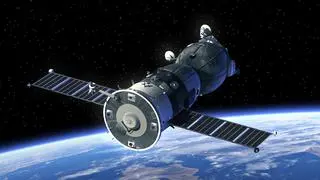Widespread use of digital devices - mobile phones, tablets, computers, smart watches and more - has made electronic waste a new environmental problem. Discarded gadgets result in massive piles of e-waste, which is contaminating soil and groundwater in the national Capital, a new study has pointed out. The results of the study, published in journal Current Science , have indicated that soil and water contamination is likely to find its way into the human body resulting in health hazards.
Researchers at Jamia Millia Islamia (JMI) studied soil and groundwater in East Delhi’s Krishna Vihar industrial area and discovered an alarming amount of toxic heavy metals leaching into them. Krishna Vihar houses unorganised e-waste handling and dumping units and is dotted with recycling units that release their hazardous effluents, including heavy metals, directly into open lands. Often solid waste is disposed just by burning it in the open.
Soil and groundwater samples were collected from five locations selected on the basis of e-waste activity around them. To compare their findings, researchers chose another five locations where there was no e-waste-related activity. The study revealed dangerous levels of contamination in both soil and groundwater near unregulated and heavily polluted e-waste dumps.
The average concentration of heavy metals (copper, lead, cadmium and chromium) in the e-waste site topsoil samples was found to be far above the range in standard agriculture soil. The average copper concentration in top soils of e-waste sites was nearly 30 times compared to reference site top soil samples. Copper concentration in the top soil was found to be 283.23 mg/kg. A close second was lead, which had a concentration of 298.10 mg/kg.
The average cadmium concentration in top soil samples was 16 times greater than that of agricultural standards, as opposed to reference site samples, which had negligible cadmium concentrations. This possibly indicated that cadmium and its compounds, which are widely applied in electrical and electronic products, have found their way into the soil in areas with high e-waste recycling activity.
“If you don’t manage e-waste in a sustainable way, toxic substances will be released into the environment. Cadmium, chromium, lead and other heavy metals, when exposed to the environment, leach into the groundwater. Very soon it enters the food chain through bio-accumulation and your liver and kidney are affected,” explained Prof.Sirajuddin Ahmed, co-author of the research paper.
Heavy metal concentration in soil is high in areas where e-waste units are located, due to the unscientific recycling methods adopted. For instance, copper, after being extracted from printed wiring boards of digital devices, leaches into the soil owing to improper dismantling and treatment of e-waste. Slowly, the metal builds up in the surface of contaminated soils, showing virtually no downward migration.
The concentration of all heavy metals, except zinc, in water in areas around e-waste treatment units, was also more than the prescribed limits. It was found that the average concentration of copper in water samples in the e-waste site was 29 times higher than water standards and eight times higher than the reference water levels. Copper concentration was found to be 1.465 mg/litre in the e-waste site water sample.
“When I began the study around 2012-13, live recycling workshops were predominant in the area. The extraction processes of precious metals from e-waste were hazardous. Acid treatment was being carried out for recovery of metals like copper, leaving residues in acid drums. Then these effluents were being directly thrown into the land,” pointed out Rashmi MakkarPanwar, a member of the research team and lecturer at the G. B. Pant Institute of Technology.
The research team included Rashmi MakkarPanwar and Sirajuddin Ahmed from the Department of Civil Engineering in Jamia Millia Islamia.
(India Science Wire)







Comments
Comments have to be in English, and in full sentences. They cannot be abusive or personal. Please abide by our community guidelines for posting your comments.
We have migrated to a new commenting platform. If you are already a registered user of TheHindu Businessline and logged in, you may continue to engage with our articles. If you do not have an account please register and login to post comments. Users can access their older comments by logging into their accounts on Vuukle.